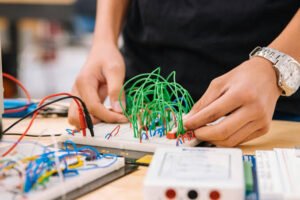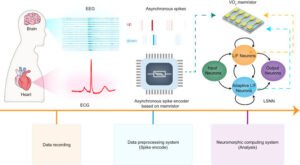Understanding the Importance of Neuroscience in STEM Education
Neuroscience plays a pivotal role in enhancing STEM (Science, Technology, Engineering, and Mathematics) education by providing insights into how learning occurs and how students engage with complex subjects. Through the study of brain function and behavior, educators can better understand the cognitive processes that drive learning and retention. By integrating neuroscience into STEM education, educators can develop teaching strategies that align with the way the brain naturally acquires knowledge, ultimately fostering a more effective learning environment.
One of the key contributions of neuroscience to education is its impact on understanding learning processes. Research in this field has illuminated how various factors, such as motivation and emotional engagement, influence student learning and performance. For instance, neuroscience indicates that students who are emotionally connected to the subject matter are more likely to retain information and apply critical thinking skills. By applying this understanding, educators can tailor their approaches to stimulate student interest in STEM through hands-on experiences and real-world applications.
Additionally, integrating neuroscience into STEM education helps to enhance critical thinking and problem-solving skills among students. By encouraging inquiry-based learning and promoting collaborative problem solving, educators can create an environment where students learn to analyze complex problems, develop hypotheses, and evaluate solutions based on evidence. This not only prepares students for real-world challenges but also promotes a culture of curiosity and exploration in STEM fields.
Furthermore, the benefits of incorporating neuroscience-infused strategies extend to improved educational outcomes. Evidence-based practices derived from neuroscience research can lead to more personalized instruction, addressing individual learning needs and preferences. This tailored approach not only contributes to better academic performance but also fosters a lifelong interest in STEM disciplines, essential for nurturing the next generation of innovators and problem solvers.
Identifying Suitable Neuroscience Projects for Students
Choosing the right neuroscience projects for students is crucial in fostering engagement and enhancing learning outcomes in STEM education. It is essential to consider the age group and educational level of the students when identifying suitable projects. For younger students, simple brain anatomy models, such as the creation of a 3D brain using everyday materials, can effectively capture their interest while teaching fundamental concepts about brain structures and functions. These hands-on activities not only make learning enjoyable but also provide a tactile experience that solidifies their understanding of complex ideas.
As students progress to middle and high school, projects can evolve to incorporate more complex topics, such as neuroimaging techniques and their significance in understanding brain activity. For instance, projects that explore fMRI (functional Magnetic Resonance Imaging) principles can encourage critical thinking and discussion about contemporary neuroscience research. Furthermore, interactive projects involving brain-computer interfaces can excite students about the possibilities of technology in neuroscience. These advanced projects can be both challenging and rewarding, particularly for students interested in pursuing careers in scientific fields.
When selecting neuroscience projects, it is vital to align them with curricular standards and educational goals. This ensures that the projects not only provide valuable hands-on experience but are also relevant to the students’ overall learning objectives. Additionally, incorporating students’ interests into project selection can significantly boost motivation. Engaging students in discussions about their preferences can lead to project ideas that resonate meaningfully, whether that involves studying the effects of neuroscience on behavior or investigating the biological underpinnings of cognitive functions.
Ultimately, by carefully identifying and selecting neuroscience projects that are appropriate for various educational levels, educators can cultivate an enriching learning environment. This approach promotes a deeper understanding of neuroscience concepts, encourages collaboration, and inspires students to explore the intersections of science and technology.
Steps to Implement Neuroscience Projects in the Classroom
Implementing neuroscience projects in the classroom can provide a unique opportunity for educators to enhance STEM education. The first step involves thorough planning, where teachers must consider their curriculum’s goals and objectives. It’s essential to create a clear outline that aligns the neuroscience project with the existing STEM framework, ensuring that the project supports the desired learning outcomes. This initial phase will set the groundwork for a successful implementation process.
Resource allocation is another crucial aspect. Educators need to assess the materials, tools, and technologies required to conduct the neuroscience project effectively. This may include obtaining laboratory equipment, access to digital platforms, or learning resources related to neuroscience. Establishing partnerships with local universities or medical institutions can also prove beneficial, offering access to expertise and specialized materials that enhance the educational experience.
Engaging students actively is fundamental when implementing neuroscience projects. Educators can promote involvement by incorporating hands-on experiments, collaborative group work, and interactive discussions. For instance, students can be divided into teams to conduct research, design experiments, or present findings. Such collaborative approaches not only stimulate interest but also allow students to learn from one another, fostering a deeper understanding of neuroscience concepts.
Moreover, it is vital to consider the diverse learning needs of students while implementing the neuroscience projects. Customizing activities and providing various entry points that cater to different skill levels can help ensure that all students feel included and challenged. Utilizing differentiated instruction strategies, teachers can modify tasks or provide additional support as needed. By prioritizing inclusivity, educators can enhance the overall learning experience, making neuroscience relatable and accessible for every student in the classroom.
Evaluating the Impact of Neuroscience Projects on Learning Outcomes
Assessing the effectiveness of neuroscience projects in enhancing learning outcomes necessitates a systematic approach. Various assessment methods can be employed to measure dimensions such as student engagement, conceptual understanding, and skills development. These methods may include formative assessments, summative assessments, and qualitative evaluations, each serving a distinct purpose in the evaluation process.
Formative assessments are particularly useful during the implementation of neuroscience projects. They allow educators to gauge students’ ongoing understanding and adjust teaching strategies accordingly. Tools such as quizzes, interactive discussions, or reflective journals can provide immediate feedback on student engagement and comprehension. This continual assessment is crucial to ensure that students are progressing and the educational material is resonating with them.
Summative assessments, on the other hand, are conducted at the end of a project to evaluate the overall impact on learning outcomes. These assessments may include standardized tests, presentations, and comprehensive projects that showcase students’ understanding of the neuroscience concepts covered. By analyzing the results from these assessments, educators can identify the strengths and weaknesses of the neuroscience projects and their influence on students’ academic performance.
In addition to these quantitative measures, collecting qualitative feedback from both students and educators plays a vital role in evaluation. Surveys, interviews, and focus group discussions can yield insights into student experiences and perceptions of the project. Such qualitative data is invaluable for identifying areas of improvement and refining the project design to better meet educational goals.
In conclusion, a well-rounded evaluation of neuroscience projects in STEM education requires a combination of quantitative and qualitative assessment methods. By continuously collecting feedback from participants, educators can enhance project implementation, ensuring that these initiatives remain impactful and relevant for student learning.
